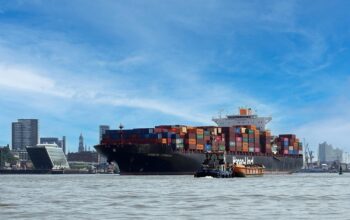In today’s fast-paced and unpredictable business landscape, building a resilient and agile supply chain is crucial for companies to thrive. Let’s explore five trending strategies that are transforming the way businesses manage their supply chains:
1. Embracing Artificial Intelligence (AI)
Imagine having a crystal ball that predicts future disruptions and helps you adjust your supply chain operations accordingly. That’s what AI is doing for many companies. By analyzing vast amounts of data, AI tools can identify patterns, optimize inventory management, and enhance demand forecasting. This allows businesses to proactively manage potential disruptions, maintain operational efficiency, and respond more effectively to changing customer demands.
Real-World Example: Companies like Procter & Gamble are leveraging AI to drive growth and innovation in their supply chains. AI helps them make data-driven decisions and automate complex processes, ensuring they stay ahead of the competition.
2. Breaking Down Silos and Enhancing Collaboration
Traditional siloed operations are giving way to more integrated and collaborative supply chain models. This shift is about fostering better communication and cooperation across different departments and with suppliers. Companies are recognizing the value of working together to drive innovation and efficiency.
Real-World Example: Wesco International emphasizes the importance of collaboration with suppliers to promote innovation. By working closely with suppliers, they canldre new ideas and improve operations, even in areas like electrical and industrial products where innovation might seem less obvious.
3. Investing in Warehouse Automation
Automation is revolutionizing warehouses by increasing efficiency, reducing labor costs, and improving accuracy. Trends like robotics and intelligent storage systems are transforming the way goods are stored, picked, and shipped. This not only enhances operational efficiency but also helps in maintaining high service levels during disruptions.
Real-World Example: Many companies are adopting robotics and AI-powered warehouse management systems to streamline operations. This automation helps manage inventory more effectively and reduces the risk of stockouts or overstocking.
4. Enhancing Supply Chain Resilience
Resilience is no longer a luxury; it’s a necessity for supply chains. Companies are focusing on building robust systems that can withstand and recover from disruptions quickly. This includes diversifying suppliers, improving logistics, and using data analytics to predict potential risks.
Real-World Example: A recent report highlighted how resilience frontrunners experience significantly lower disruption-related revenue losses. By prioritizing resilience, businesses can minimize the impact of unforeseen events and maintain consistent customer service levels.
5. Leveraging Technology for Data Exchange
Technology is playing a crucial role in streamlining supply chain operations, especially in data exchange. Tools like sFTP automation are being used to enhance forecast sharing and collaboration between suppliers and buyers. This improves supply chain visibility and helps in making more accurate demand forecasts.
Real-World Example: The use of sFTP automation has been instrumental in reducing costs and improving turnaround times for shipping documents. This technology enables seamless data exchange, which is vital for maintaining supply chain efficiency and accuracy.
These strategies are not just trends; they are transformative changes that are reshaping the supply chain landscape. By embracing these innovations, companies can build stronger, more resilient supply chains that are better equipped to face the challenges of the future.
References:



